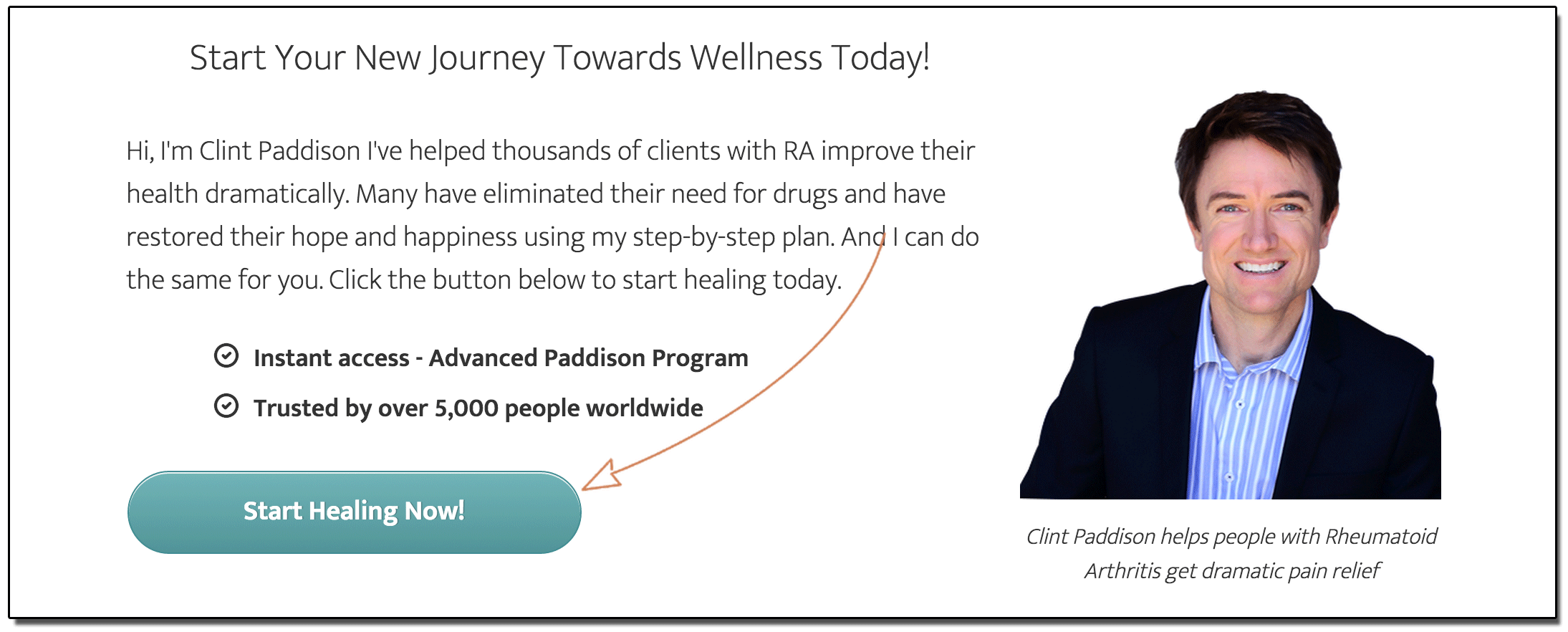Considered one of the cornerstones of modern medicine, antibiotics are certainly one of the most common and important treatments for a multitude of ailments. But there is a terrible and severe side effect of taking antibiotics that none of us give much thought to. In fact, so severe is the potential side effect of taking regular long-dose antibiotics that I believe it can contribute towards the onset of autoimmune diseases like RA. To learn why, let’s start by getting down and dirty with discussions on intestinal bacteria…
In an ideal state of health you would have between 2-4 pounds of bacteria living inside your intestines in numbers upwards of 40 Trillion. This may sound like the premise of a horror film, but don’t freak out, the vast majority of organisms living in there are more helpful than harmful to our bodies. Sometimes referred to as ‘healthy bacteria’ or ‘Probiotics’ or ‘Microflora’, these tiny organisms locate themselves between the end of the small intestine and the distal colon and they are absolutely imperative to our greater health. So important, that we could actually think of them more like a vital organ like a lung or a kidney.
The many important functions that our bacteria perform for us includes killing harmful bacteria, killing fungus (also known as candida), and building B vitamins for the rest of the body to use and which are linked to our energy levels. They also help our bodies produce enzymes, help to change the acidity within our cells and play an important role in the development of the immune system by maintaining a constant dialog with our internal bodies through the surface of the gut. Our microflora also influences many of our hormones. So this healthy bacteria is very important stuff.
The word ‘biotic’ means ‘pertaining to life’. Hence a probiotic is literally pro life and anti-biotics is, if we speak literally, anti-life! And in some ways it can feel like this once you’ve ruined your gut with these drugs. Taking prescription antibiotics for a long period of time is catastrophic to your internal health. Doses of antibiotics not only kill the nasties, but also kill the good, innocent civilians in your stomach as well. A lack of healthy intestinal flora is a serious concern. I believe the cause of my RA was due mostly to taking antibiotics for years to combat some persistent acne. I blindly took these antibiotics from my late teens through into my early 20’s without too much of a thought, other than ‘gee, my skin looks good!’. I wish I had some idea of the bigger picture. Little did I know that I was creating an environment where I was wiping out my healthy bacteria, thus allowing unwanted pathogens to thrive. Pioneering orthomolecular researcher Dr F. R. Klenner says RA sufferers have a ‘shortage of B vitamins’. [3] Since B-Vitamins are manufactured by your healthy bacteria it stands to reason that if you’ve killed all your bacteria you’d be short of B-Vitamins. In addition, since these bacteria are important in maintaining the dialogue with your immune system through the gut wall, it stands reasonable to imagine that without sufficient healthy bacteria your immune system is likely to go haywire – and even begin attacking other tissues in the body perhaps?
Without the correct approach, the challenge to uphold our intestinal health can be a difficult one. You have a leaky gut, a depleted mucosal lining and a shortage of healthy bacteria to rectify. Trust me, you never ‘accidentally’ fix these without knowing how to, since they don’t teach you this stuff in high school (and they don’t teach Rheumatologists this stuff at College either unfortunately). However, once you are shown how then it can be understood and followed in a quite straightforward manner and excellent results have been achieved by many in a short period of time.
Well, many companies sell probiotics in bottles which enable you to supplement your supply of good bacteria via capsules. But as I teach in detail in the Paddison Program there is a better and more effective way than this, which is to feed the existing bacteria with their favorite foods which allows their populations to grow naturally, rather than trying to add new guys to the mix. From my own experimentation, I have found that this is the best way to go and it’s far cheaper. Let’s feed the good bacteria and let them multiply! God knows you’ve been starving them to death up until this point!
So what do your bacteria want to eat? Good bacteria love fiber from all kinds of plant foods, but they espeically like fiber from green leafy vegetables (think baby spinach leaves, collard greens, all types of lettuce, kale etc). On the flipside, pathogens thrive when the diet is low in plant foods and high in animal products and processed foods.
The predominance of the bacteria species that lives in our gut is determined by the foods that we eat. So by increasing our dietary intake of plant foods (especially through eating salads with lots of leafy greens) and by reducing our intake of processed and animal-based foods we can stimulate our healthy bacteria numbers quite quickly. Major alterations in the microflora take place within one to two weeks of dietary intervention [1] As a treat to your little guys, good bacteria also love raw garlic, raw onion and artichoke.
Wishing you happy times feeding and growing your bacteria! They will thank you for it via a reduction in joint pain.
Clint Paddison, Wellness Leader
Reference:
[1] Clin Res 29:754, 1981
Disclaimer: Do not make any changes to your diet, lifestyle, medications or exercise regimes without first consulting a doctor.

